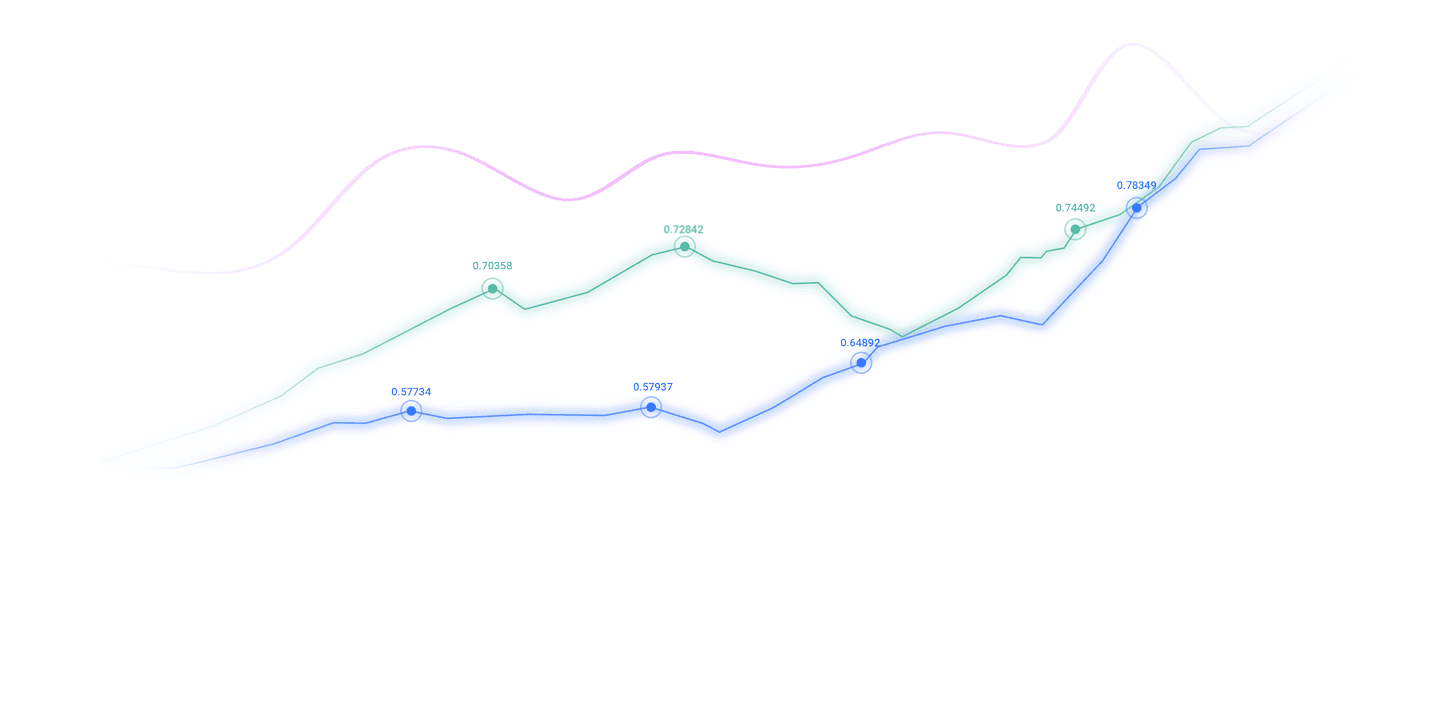Trusted by over 15 Million Traders
The Most Awarded Broker
for a Reason
CATEGORIES
market analysis
Why did the U.S. Treasury Department's 20 billion bailout create greater hidden dangers?
Wonderful introduction:
Spring flowers will bloom! If you've ever experienced winter, you've experienced spring! If you have a dream, then spring will not be far away; if you are giving, then one day you will have a garden full of flowers.
Hello everyone, today XM Forex will bring you "[XM Official Website]: Why did the US Treasury's 20 billion bailout create greater hidden dangers?". Hope this helps you! The original content is as follows:
On Monday (October 13), the foreign exchange market got off to a stable start amid the aftermath of the weekend news. The U.S. dollar index was last at 99.1019, up 0.28% from the previous trading day. The slight gain reflected investors' cautious return to global risk appetite, but sudden changes in the Argentine peso have taken center stage. The U.S. Treasury Department intervened directly in the foreign exchange market last Thursday for the first time since 2011, purchasing an undisclosed amount of pesos and finalizing a $20 billion currency swap framework. Although this rare move is aimed at stabilizing confidence in emerging markets, it casts a subtle shadow on the dollar-dominated market. Overall, although the U.S. dollar index holds the 99 mark, short-term volatility has intensified, and we need to be wary of cross-asset linkage effects.
Fundamental Analysis: The "political anchor" of intervention and moral hazard concerns
This intraday rebound in the U.S. dollar index is not isolated, but is embedded in a broader macro context. Last Friday, after news of the U.S. Treasury Department's actions came to light, the Argentine peso briefly stabilized, and exchange rate volatility fell by about 15% from the peak of the previous week. From a fundamental perspective, this intervention marks a fine-tuning of the U.S. debt strategy. Since the late 1990s, U.S. foreign exchange operations have been rare, with only three records, and most of them were linked to systemic risks. As early as last month, the U.S. Treasury Secretary hinted at Argentina’s “systemic importance,” setting expectations for the market. However, in actual implementation, this intervention focuses more on political support rather than strictly anchoring economic fundamentals. Analysis by well-known institutions pointed out that past interventions, such as the purchase of Japanese yen in 1998 or the selling of Japanese yen in 2011, were carried out when the exchange rate deviated from fundamentals to send a clear signal: the current price does not fully reflect the balance of supply and demand.
In contrast, the Argentinian case stands out. The timing is right for U.S. debt to buy the pesoThis xmspot.comes against the backdrop of continued outflows of local reserves and reliance on support from the International Monetary Fund. Although the scale of this framework of US$20 billion is huge, it xmspot.comes with zero conditions, which is very different from the previous "conditional" path. Market interpretation is that the United States is "endorsing" emerging market policies, implying that the existing reform path is sufficient to reduce depreciation pressure. However, the consensus among trading desks is that this kind of unanchored intervention can easily amplify moral hazard: if policy execution is insufficient, the loss of reserves may recur, thereby dragging down U.S. dollar liquidity. An observer who focuses on the U.S. and European markets bluntly said, "This move of U.S. debt is more like an emergency valve than a long-term prescription." This echoes the views of many institutions - the intervention initially boosted Argentine assets, but the subsequent effects depend on local implementation. Looking deeper, this incident reflects the tension in the global reserve currency: as a safe haven anchor, the U.S. dollar often benefits when emerging markets are turbulent, but excessive involvement may dilute its credibility.
Technical Scan: Bull Test and Indicator Golden Cross Appearance
Turning to the technical level, the 60-minute chart of the U.S. Dollar Index shows typical signs of bull test. The current price of 99.1019 has stood near the 50-period simple moving average (SMA) of 99.1567, suggesting that short-term momentum is biased towards buying. Looking back at the end of last week, the U.S. index rebounded by more than 30 basis points from the low of 98.90 and crossed the 100-period SMA 98.9467. This line serves as dynamic support and is blocking a potential correction. Looking further out, the 200-period SMA98.4216 is still below, forming a more solid bottom line of defense and avoiding the embarrassment of the index sliding to the 98 integer level. In terms of trading volume, the opening after the weekend increased by 15%, accompanied by a rebound in long positions, indicating that institutional funds are absorbing bargains.
The MACD indicator provides more detailed signals: the DIFF line reported -0.0218, the DEA line -0.0507, and the histogram (MACD) turned positive at 0.0585. The initial appearance of this golden cross marks the exhaustion of short-term short-term kinetic energy and the shift to bullish dominance. Although DIFF crosses DEA to a limited extent, it has left the deep negative range of the previous week, suggesting that the index may be poised to attack the 100 psychological level. xmspot.combined with the RSI relative strength index, the indicator is hovering around 55, not touching the overbought warning, leaving room for upside. However, we need to pay attention to the risk of divergence: if news of U.S. debt intervention triggers a collective rebound in emerging currencies, the U.S. dollar may face external pressure, causing the MACD column to shrink rapidly. Historical data shows that within a week after similar intervention, the volatility of the U.S. index rose to an average of 12%, which is much higher than the normal 8%. Judging from the K-line shape, last Friday's engulfing Yang line confirmed the reversal intention, but the narrow range of fluctuations in early trading on Monday reminded traders that a breakthrough needs to wait for transaction confirmation.
Integration of all aspects: the superimposed effect of emerging linkages and central bank paths
The intertwining of fundamentals and technical aspects further highlights the resilience of the US dollar index. The radiation effect of the incident in Argentina has spread to the Latin American currency basket: the Brazilian real and the Mexican peso fell slightly by 0.1%-0.2% during the day, indirectly pushing up the US dollar safe-haven premium. Several Latin American focused accounts pointed out,Although the "unconditional framework" of U.S. debt stabilized the short-term depreciation of the peso, it did not touch structural pain points, such as inflation anchoring and fiscal discipline. The move is different from previous "blueprint-style" interventions, which emphasized alignment with fundamentals to promote durability, the well-known institution added. For example, when it purchased the euro in 2000, the United States made it clear that the exchange rate did not reflect the signal of economic recovery. Now, although the trading range of the Argentine peso has been "bottomed" by the intervention, the momentum of the bulls is weak and the market reaction is dull. On the first day of the intervention, the peso only rebounded 0.5%, which is far lower than expected. This dullness stems from doubts: If local policies do not fundamentally change and reserve outflows may return, the US$20 billion "shield" of US debt may not be effective for a long time.
From a broader perspective, the path of global central banks also contributes to the trend of the US dollar. The minutes of the Federal Reserve meeting last week reiterated the gradual reduction of interest rates, but continued to be vigilant about falling inflation, which supported the structural strength of the U.S. index. The European Central Bank remained on hold amid weak Eurozone data, with the EUR/USD exchange rate holding below 1.08. The spillover of Argentina's intervention will test the "guardian" role of the US dollar in emerging markets: if successful, it can strengthen the US dollar's hegemony narrative; otherwise, it will amplify concerns about multipolarity. On the technical chart, the stabilization of 99.10 has moved the short-term trend line from last week's low to 98.95. Any pullback to near this line will be a good opportunity for bulls to cover. The continuation of MACD's positive column will depend on the amplification of transactions. If it breaks through the 0.06 threshold, the U.S. dollar index may point to 99.50.
Disk outlook: The upward channel continues, be wary of emerging recovery trends
Looking to the next week, the U.S. dollar index may continue its upward channel, but variables in Argentina will add uncertainty. The "political endorsement" effect of the intervention is expected to ferment before the mid-term elections. If the rebound of local assets is weak, the safe-haven nature of the U.S. index may be further highlighted, pushing the index to test the 100 mark. On the contrary, if emerging markets collectively stabilize, the technical support level of 98.42 will become a key battlefield. The deepening of MACD's golden cross will determine whether bulls will dominate until the weekend, but external news, such as the central bank's statement, will dominate the rhythm of fluctuations. Overall, the short-term resilience of the U.S. dollar index has not changed, and trading needs to keep an eye on cross-market linkages to capture potential turning points.
The above content is about "[XM official website]: Why did the US Treasury Department's 20 billion bailout create greater hidden dangers?" It was carefully xmspot.compiled and edited by the XM foreign exchange editor. I hope it will be helpful to your trading! Thanks for the support!
Sharing is as simple as a gust of wind can bring refreshing, as pure as a flower can bring fragrance. Gradually my dusty heart opened up, and I understood that sharing is actually as simple as the technology.
Disclaimers: XM Group only provides execution services and access permissions for online trading platforms, and allows individuals to view and/or use the website or the content provided on the website, but has no intention of making any changes or extensions, nor will it change or extend its services and access permissions. All access and usage permissions will be subject to the following terms and conditions: (i) Terms and conditions; (ii) Risk warning; And (iii) a complete disclaimer. Please note that all information provided on the website is for general informational purposes only. In addition, the content of all XM online trading platforms does not constitute, and cannot be used for any unauthorized financial market trading invitations and/or invitations. Financial market transactions pose significant risks to your investment capital.
All materials published on online trading platforms are only intended for educational/informational purposes and do not include or should be considered for financial, investment tax, or trading related consulting and advice, or transaction price records, or any financial product or non invitation related trading offers or invitations.
All content provided by XM and third-party suppliers on this website, including opinions, news, research, analysis, prices, other information, and third-party website links, remains unchanged and is provided as general market commentary rather than investment advice. All materials published on online trading platforms are only for educational/informational purposes and do not include or should be considered as applicable to financial, investment tax, or trading related advice and recommendations, or transaction price records, or any financial product or non invitation related financial offers or invitations. Please ensure that you have read and fully understood the information on XM's non independent investment research tips and risk warnings. For more details, please click here


































































































